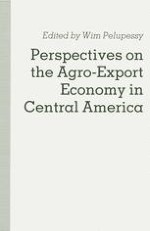1991 | OriginalPaper | Chapter
Export Agriculture and Crisis in Central America: Labour Market Problems in Nicaragua
Authors : Jan P. de Groot, Harrie Clemens
Published in: Perspectives on the Agro-Export Economy in Central America
Publisher: Palgrave Macmillan UK
Included in: Professional Book Archive
Activate our intelligent search to find suitable subject content or patents.
Select sections of text to find matching patents with Artificial Intelligence. powered by
Select sections of text to find additional relevant content using AI-assisted search. powered by
Colonial policies of a feudal and mercantilistic character laid the foundations for a dual economic system in Central America, in which commercial agriculture was associated with production for export and subsistence agriculture with food production. Export agriculture was concentrated in the haciendas which exacted cheap labour from the indigenous sector. After independence and the collapse of the Central American Republic in 1839, the five small nations embraced economic liberalism as a guiding doctrine. Liberalism contained a new political model for the post-colonial state as well as an economic programme. Free trade and specialisation according to comparative advantage were seen as dynamic forces of economic development. Public policies were redirected and resources reallocated to the development of new agricultural commodities for export, in particular coffee and bananas. Thus the colonial economy was transformed into a larger and more productive one, but its dual character was maintained (Quirôs, 1971:33, 93). Although vulnerable to world market conditions, the Central American economies expanded rapidly until the economic crisis of 1973. After the Second World War there was a new round of expansion of export agriculture.
